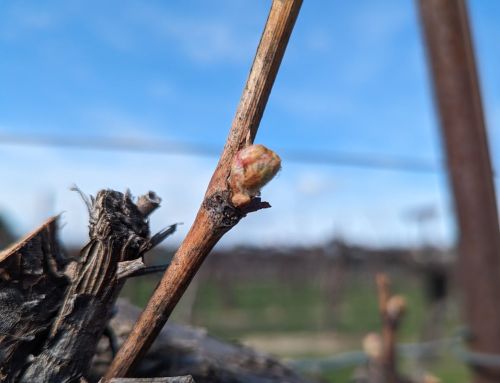 Executive Toby Whitmoyer, president, Washington, will also be leaving the company
Executive Toby Whitmoyer, president, Washington, will also be leaving the company
On December 6th, Ste. Michelle Wine Estates (SMWE), the largest winery in the Pacific Northwest, announced a substantial layoff. The layoffs impacted approximately 7% of the company’s staff.
“We are adjusting our business structure to better support our more focused, industry-leading Pacific Northwest wine portfolio,” says Lynda Eller, senior director, communications and corporate affairs at SMWE. “These changes impacted approximately 7%, primarily administrative roles, in the organization.”
The current changes going on at Ste. Michelle will affect top levels of the organization, however. Executive Toby Whitmoyer will be leaving the company. Whitmoyer had been at SMWE since February of 2022 and was part of the reorganization into three commercial divisions that took place in October of that year.
“As a result of the changes to the business structure, Toby Whitmoyer, president of our Washington business, has chosen to pursue other opportunities and will stay on with the company through the end of the year,” Eller says.
This is Ste. Michelle’s second round of layoffs in 2023. The company laid off 5% of its workforce in February. Taken in total, this means the company has laid off approximately 12% of its staff in 2023. The latest layoffs hit particularly hard given the holiday season. SMWE also celebrated the company’s 90th anniversary one day prior to the layoffs.
“We value all contributions of our team members past and present and believe these steps are necessary to drive sustainable growth for the long-term,” Eller says. “We remain committed to our heritage of crafting high-quality Pacific Northwest wines and delivering memorable wine experiences for our customers.”
The layoffs come less than five months after Ste. Michelle informed its grower partners that it would be reducing fruit intake by 40% over the next five years. This will have a widespread impact across the Washington wine industry, with the effects already being felt.
The first public signs of financial struggles at SMWE came in 2020. That year, Altria, which owned the company, announced a $292 million inventory write-off as well as $100 million in losses on non-cancellable grape purchases in what was termed “a strategic reset.” Altria subsequently sold SMWE to Sycamore Partners, a New York-based private equity firm, in 2021 for $1.2B in cash.
Since then, there have been a number of leadership changes. CEO David Dearie left in October of 2022. Chief winemaker Juan Muñoz-Oca left the company in February of this year. Shawn Conway was hired as CEO in March.
SMWE has also been making strategic changes to its portfolio. This has included purchasing Willamette Valley’s A to Z Wine works and Rex Hill in 2022. The company sold its interest in Napa Valley’s Stag’s Leap Wine Cellars, which it co-owned with Italy’s Antinori family, in May of this year.
Ste. Michelle has also been making changes to its SKUs. This has included sunsetting its Syrah-focused Tenet project. Other SKUs, such as a Chateau Ste. Michelle Indian Wells Riesling and Rosé, both in the $15-20 price range, have been added.
Overall, SMWE’s struggles are indicative of larger difficulties in the wine industry due to recent tectonic shifts. Numerous large companies have laid off staff and divested assets in the past two years.
“Washington mirrors the rest of the wine industry with declining sales due to increased competition in the broader alcohol category and a need to do a better job of attracting the next generation of wine consumers,” Whitmoyer told Shanken News Daily in a late November interview. “As an industry, we need to continue to evolve how we speak to new wine consumers and deliver products and experiences that surprise and delight them.”
While SMWE has been struggling of late, Washington is very much a tale of two industries. SMWE makes 7M cases of wine per year and accounts for a huge percentage of the state’s production. However, 90% of Washington wineries make fewer than 5,000 cases per year. Many small to mid-sized wineries say they have continued to see strong growth in recent years.
This article has been updated to include additional information.
Northwest Wine Report is wholly subscriber funded. Please subscribe to support continued independent content and reviews on this site.
To receive articles via email, click here.







Very interesting, thank you
For some years I worked for a communications company whose client list included many of the top NW businesses in technology, retail, aerospace etc. A major client of ours was Microsoft. And a mantra at our company was do not let Microsoft (or any major company) become your sole or dominant client. Because they will own you and ultimately dump you, and you will be left with scraps. The Washington wine industry has been run by Ste. Michelle for the past half century. And there were a lot of well-documented benefits. Now we’re seeing the other side, when the big kahuna bails or folds. Not a good time for Washington wine I’m afraid.
You can’t cut your intake of raw material drastically and not end up with surplus production capacity, which includes humans.
Some of the outfits which supply SMWE with bulk wine didn’t work much overtime this past crush. I know several wineries that upped production doing processing of grapes that originally were destined for SMWE.
I lot of wine has been leaving the state in tankers the past couple of years.
I worked for Ste Michelle for 38 years and played a significant role in bring Ste Michelle as one of the top producers of fine wines. I witnessed the tremendous growth of the compsny. But as Newton said – what goes up comes down too, Ste zmichelle sadly followed the Newton Law.